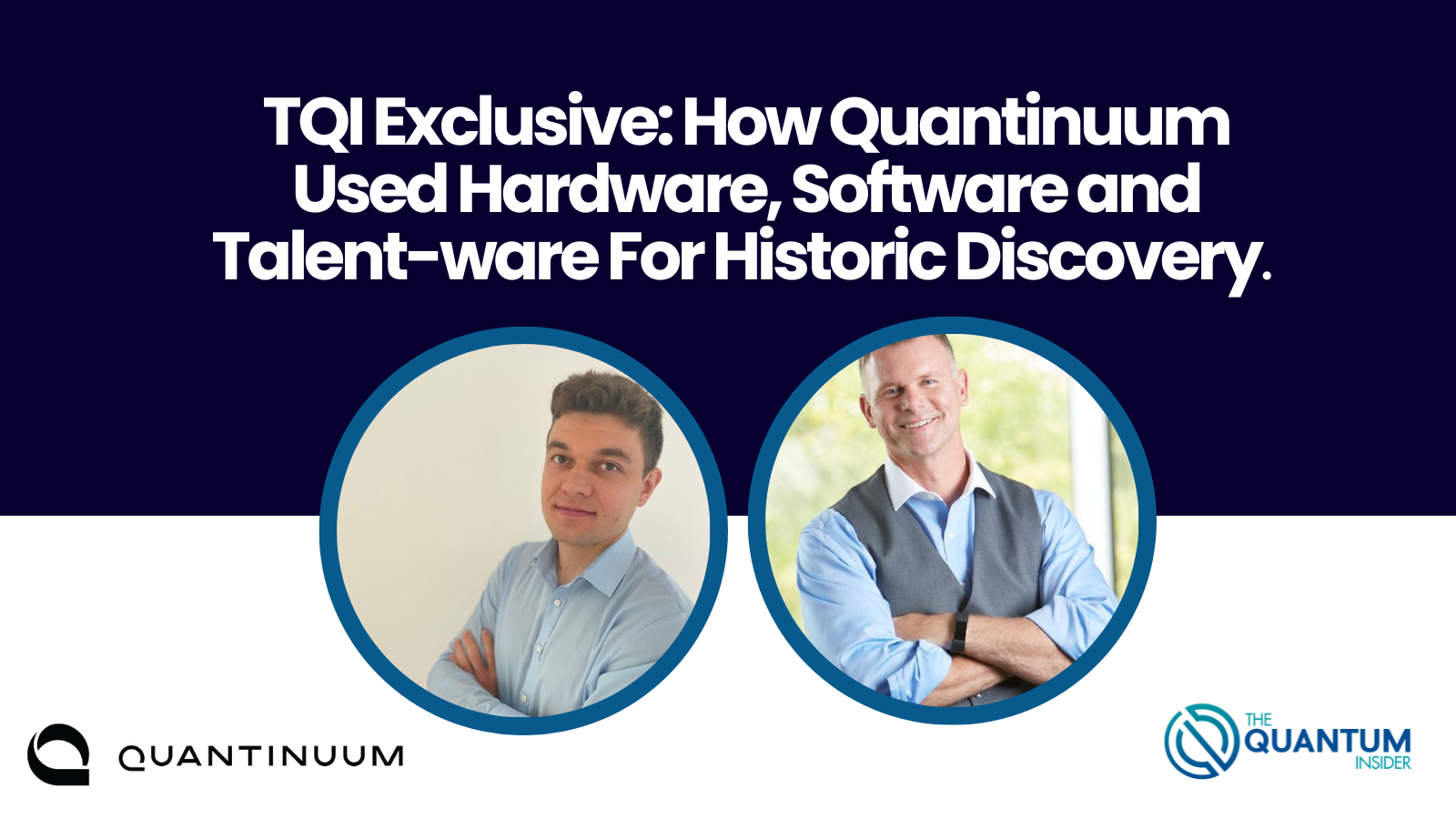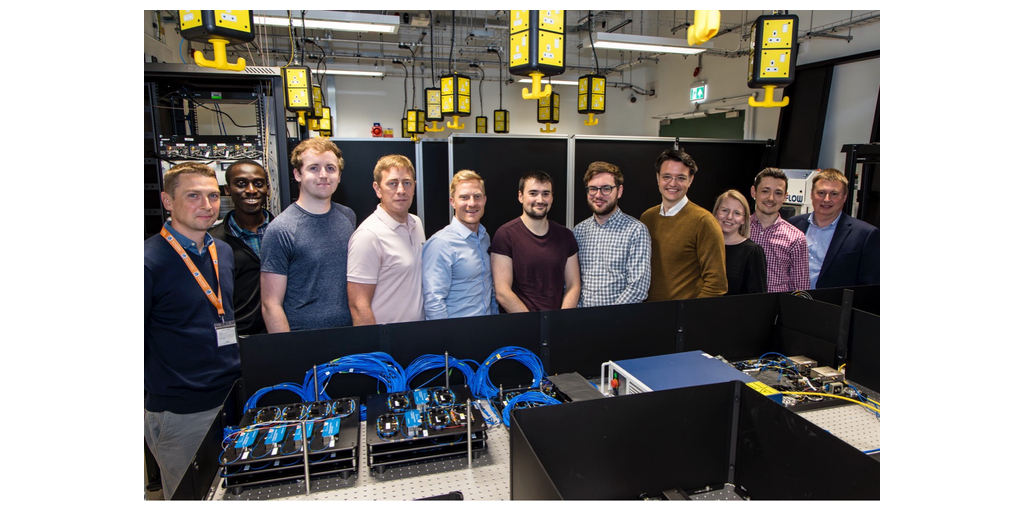Insider Brief
- In a historic experiment, a Quantinuum-led team of scientists created and manipulated non-Abelian anyons.
- Non-Abelian anyons could serve as the platform for fault-tolerant quantum computers, in other words stable quantum computers that could be unleashed on complex computational challenges.
- Quantinuum officials recognized the unique hardware and software expertise, along with the intense scientifically driven staff for the success of the project.
A team of Quantinuum-led scientists report they were able to create and — importantly — manipulate exotic particles called non-Abelian anyons, which could provide a path toward fault-tolerant quantum computers.
In an experiment conducted using Quantinuum’s System Model H2 quantum computer, the team of researchers was able to demonstrate a non-Abelian topologically ordered state. Many experts consider this new — and, until now, never demonstrated — state of matter to be the most likely path toward a quantum computer that does not need extensive error correction, referred to as a fault-tolerant quantum computer.
“Fault tolerant quantum computing is our ultimate aim. Our world leadership in quantum computing continues to be showcased and proven by real advances, and the creation and manipulation of non-Abelian anyons to create topological qubits is another example that when incredible tools are given to brilliant people, they will find something amazing to do with them,” Ilyas Khan, Founder and Chief Product Officer at Quantinuum, said in an announcement about the discovery. “This is a transistor moment for the quantum computing industry – and the fact that we have used a quantum computer as the machine tool for building topological qubits that are a significant step towards fault tolerant quantum computing is further testimony to our long-held belief that quantum systems are best explored and created by other quantum systems. This is precisely what Feynman anticipated in his now famous remarks that are so often quoted as foundations for quantum computing.”
The Perfect Platform

Quantinuum, arguably the largest standalone full-stack quantum computer company, relied on its hardware, software and — to coin a phrase — talent-ware to make the discovery.
The company’s quantum device, the H2, was instrumental in this historic discovery, Tony Uttley, Quantinuum’s COO, said in an exclusive interview with The Quantum Insider.
“On February 16, at 1607 GMT time, for the first time ever, using our H2, we created and controlled these non-Abelian topological qubits – and that last part of the sentence, that we were able to control them is a huge part of the overall story,” said Uttley. “This was literally only possible on the planet because we are using the H2 quantum computer. There’s a set of ingredients that you absolutely have to have to make this work. And they only exist right now in this beautiful platform that we’ve just launched.”
The 32-qubit H2 has a new “racetrack” design that maintains the all-to-all connectivity between qubits of the H1. This means that every qubit in the H2 can directly be pairwise entangled with any other qubit in the system
The H2’s unique design provided the perfect platform for the experiment for a few reasons, added Uttley. First, the H2 could provide enough qubits, in this case a total of 30 qubits, which include three ancillary qubits.
The experiment also needs high fidelity, which is a strength of the H2. Fidelity is important in quantum computing because it determines the accuracy and reliability of quantum operations and algorithms.
“The third thing you need to be able to measure is the computation in the middle,” said Uttley. “In this case, you’re measuring the state in the middle of it being in the state, and then be able to take action. We actually have to be able to take the understanding of what just you saw, and feed it forward back into the manipulation of that state. We call that conditional logic.”
Managing all of these requirements at once requires unusual precision, even for a quantum computer. The H2 was up to the task.
“All of this has to be happening at the same time for the experiment to work – and the only computer in the world that can do that is our H2 quantum computer,” said Uttley.
Henrik Dreyer, a theoretical quantum physicist and scientific lead in the condensed matter group at Quantinuum, said the H2 helped transform theory into experimental reality.
“We all knew that this was a theoretically known and that the path was valid, but being able to execute this path, specifically, using the target measurement that was the main ingredient for that theoretical proposal,” said Dreyer.
Talent-ware
Both Uttley and Dreyer said that Quantinuum’s emphasis on building a team that respects science, indulges creativity and focuses on real business solutions is just as important to the success of finding and controlling non-Abelian anyons as quantum computers and the H2. The building of this culture started with the formation of Quantinuum, following the merger of Cambridge Quantum and Honeywell Quantum Solutions.
“We absolutely have it in our core that if you want to accelerate how fast quantum computing is valuable to the world, you have to be an integrated company,” said Uttley. “You have to be able to know the hardware and what makes it work and you have to know the operating system layer and how to make the most efficient use of it with the applications.”
The topological qubit project exemplifies Quantinuum’s commitment to using cutting-edge science to create practical quantum computing.
“In November of 2022, our H2 was already running and we brought together 50 scientists from around the world and said: Here’s what this incredible system does. What should we show?” said Uttley. “And in typical scientist fashion, they came up with 30. And in typical fashion went through and said, Okay, let’s prioritize, and, as you can guess, the topological qubit project went to the top of the list.”
Where Will Fault Tolerant Quantum Computers Take Us?
Realizing that hurdles still remain in the way, the Quantinuum team is excited about where mastery of topological qubits will take the industry — and humanity.
Many of the current uses for quantum computers become more possible with fault-tolerant quantum computers. Uttley sees the devices playing dramatic roles in chemistry, encryption and the life sciences, for example.
But using the devices to probe the very fabric of reality remains a tantalizing possibility.
“Where we are now is, we know what our system can do and we know what our system is good at,” said Uttley. “We have been able to take advantage of the fact that it is working as a quantum computer to do things that only quantum computers can do. In essence, our system right now is a condensed matter physics machine. So ,if you’re a condensed matter physicist, or a high energy physicist, this is another tool that you’ve never had before. It’s never existed on the planet. Governments put in gigantic, expensive hadron colliders to be able to do this kind of physics work. But, now this tool exists.”
The team expects further development, but estimate that practical use of the topological qubit could be just 12 to 18 months away.
“Ultimately, what I think this experiment shows is that if anyone is going to make and scale a fully universal fault-tolerant quantum computers, this approach is a great one to try because topological qubits are naturally more immune to noise, which is the reason that people have been trying to do something with them for the last quarter century,” said Uttley.
You can read more about the project here.
The paper, itself, is available on the pre-print paper ArXiv.
If you found this article to be informative, you can explore more current quantum news here, exclusives, interviews, and podcasts.


















